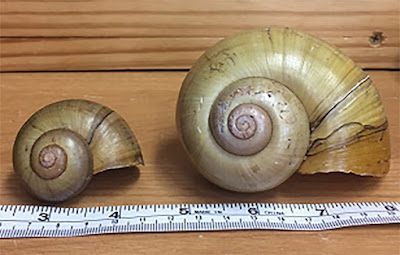The United States has over 5 million alligators today. One reason for their surge in numbers is that they were put on the endangered species list back in the 1960s, about 25 years after the Nutria was first released from a wayward fur farm started by the McIlhenny Tabasco sauce family.
By 1959, there were over 20 million nutria in Louisiana, and they soon migrated to other states such as Mississippi, Texas, Georgia, and Florida, providing ready fodder for a now-growing alligator population.
A more recent example of how an invasive species has helped a native species on the ropes can be found in the rapid evolution of Snail Kites in Florida whose population has adapted, evolved, and flourished with the arrival of a large non-native species of apple snail. From The New York Times:
The population of North American snail kites — birds that use curved beaks and long claws to dine on small apple snails in the Florida Everglades — had been dwindling for years, from 3,500 in 2000 to just 700 in 2007. Things began to look particularly bleak in 2004, when a portion of the Everglades was invaded by a species of larger snail that the birds had historically struggled to eat. Ornithologists assumed the shift would hasten the snail kite’s decline.
But the number of snail kites in the Everglades grew over the decade following the invasion of the larger snails. The reason, according to a study published Monday in Nature Ecology and Evolution, is that the snail kites have rapidly evolved larger beaks and bodies to handle the bulkier snails.
“We were very surprised,” said Robert Fletcher, Jr., an ecologist at the University of Florida and an author of the study. “We often assume these large-bodied animals can’t keep up with changes to the system, like invasions or climate change, because their generation times are too long. And yet we are seeing this incredibly rapid change in beak size of this bird.”
...[R]esearchers found suggestions of a genetic component to the changes, as well. By tracking the birds’ pedigrees, they found that large-beaked parents gave birth to large-beaked offspring, setting the stage for large-scale evolutionary change.
Thirteen years after the larger snails invaded, the population of the birds has nearly tripled, to “well over 2,000,” Dr. Fletcher said. “It’s been a major development for the recovery of this species.” Outside of Florida, related snail kites are found in parts of South America, Central America and the Caribbean, where they are not considered endangered.
 |
| Large invasive apple snails are two to five times larger than the native species. |






EmoticonEmoticon